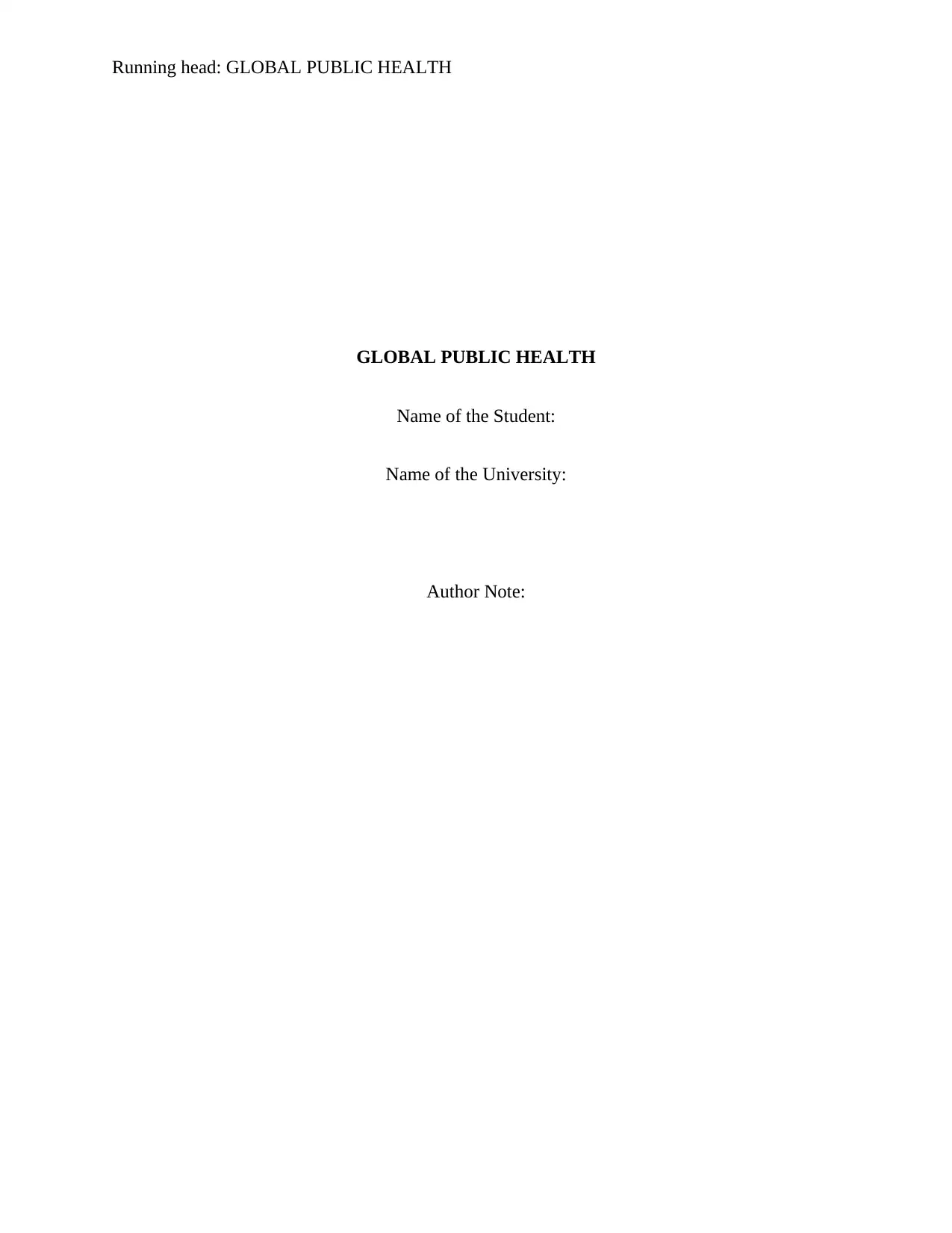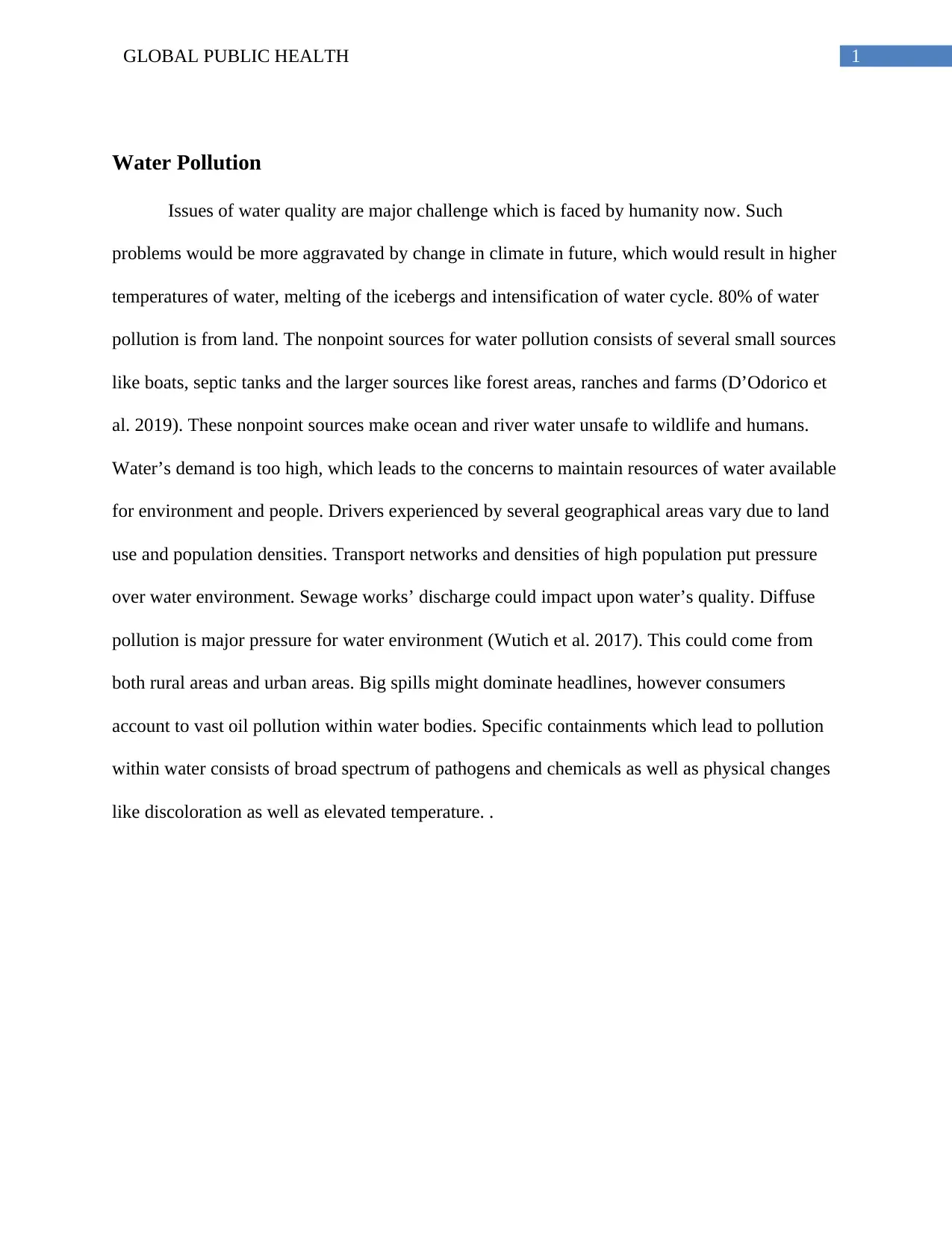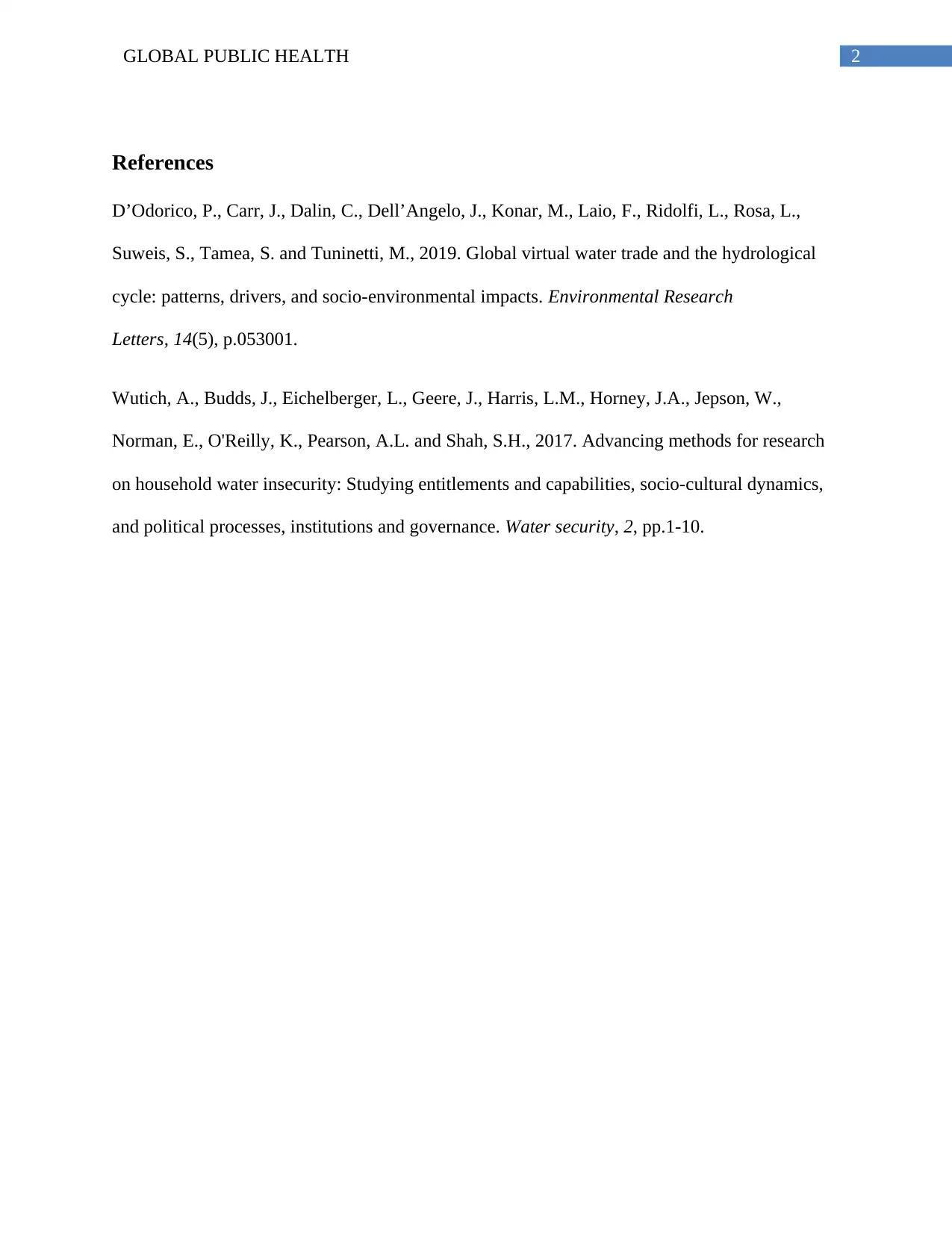University Report: Global Public Health and Water Pollution
VerifiedAdded on 2022/08/22
|3
|434
|16
Report
AI Summary
This report addresses the critical issue of global water pollution and its profound impact on public health. It highlights the major challenges posed by declining water quality, exacerbated by climate change factors such as rising water temperatures and melting ice. The report identifies land-based activities, including both nonpoint sources like boats and septic systems, as well as larger-scale contributors such as agriculture and forestry, as primary drivers of water pollution. It emphasizes the strain on water resources due to high demand and the varying impacts across geographical regions based on land use and population density. The report also notes the influence of transport networks and sewage discharge on water quality. Furthermore, it discusses the broad spectrum of contaminants, including pathogens, chemicals, and physical changes that lead to water pollution. The report concludes by referencing key studies that support these findings, providing a comprehensive overview of the issue.
1 out of 3










![[object Object]](/_next/static/media/star-bottom.7253800d.svg)